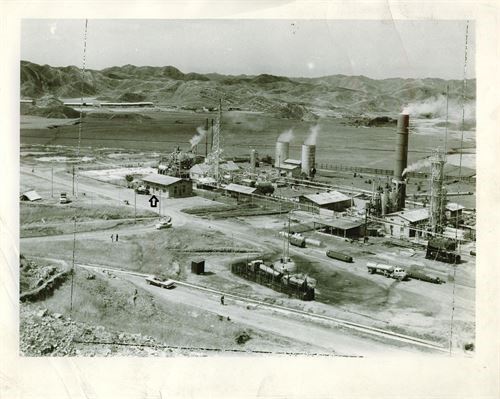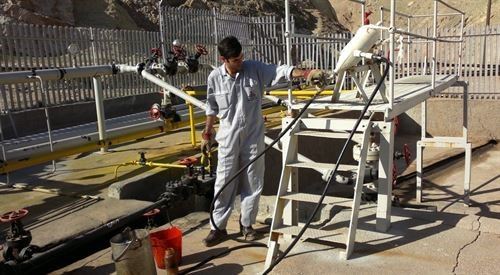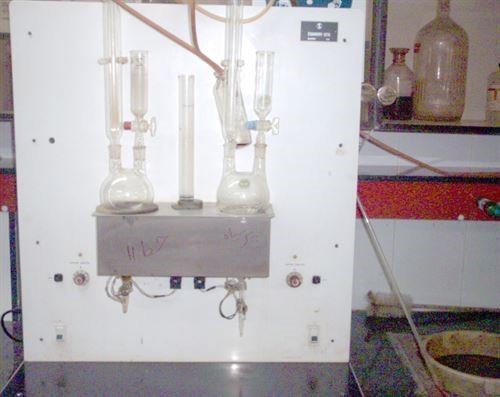1st Petroleum Chemical Laboratory in Masjed Soleyman
Tuesday, September 1, 2020
Farid Kavosh
Petroleum Engineer and Project Expert at Masjed Soleyman Oil Museum
The issue of conducting oil tests was raised shortly after the operation of the first oil well in Masjed Soleyman back in 1908, and with the establishment of the first chemical oil laboratory in this oil company-city, in addition to quantity, the issue of oil quality was also considered in the production procedure.
After years of operating as a makeshift and mobile facility, the laboratory was established in a building near well No. 8. This became the oldest chemical laboratory in the Iranian oil industry. Old-timers of the city near the well and Bi Biyan still call the area Chemi. Lab, a brief title given to the lab in the English correspondences of those days.
Chemical Plant
The building of the Petroleum Chemical Laboratory is marked with an arrow next to the Bi Biyab refinery and sulfur plant.
Throughout more than a hundred years of oil industry, the Chemical Department of Oil and Gas has been in charge of measuring the quality of oil and gas produced and plays a pivotal role in the production, processing and delivery of the oil and gas extracted from the wells operated by the National Iranian Oil Company.
In petroleum chemical laboratories, various experiments are performed, including: determining the amount of salt in crude oil, determining the specific gravity as well as the API of oil and the petroleum products, determining the percentage of water while production of crude oil, determination of the amount of hydrogen sulfide and sulfur in crude oil, determination of shrinkage coefficient of transmission lines of units and wells under test, and determination of steam pressure of transmission lines of units.
Over the year, determining the amount of salt in oil has always been sensitively pursued and controlled. The quality of oil depends on its purity (crude oil must be free of salt, water, sand, hydrogen sulfide, Sulfur, etc.). Impurities in oil cause corrosion and disruptions in the operation of exploitation equipment and are considered an economic disadvantage, therefore, the purpose of these experiments is to study the oil and control the amount of salt in it. Excessive salt in crude oil causes oil wells to shut down, loss of oil quality in terms of sales, make separation, operations more difficult, cause disruption and corrosion in the machinery, tanks, refineries and vessels.
According to international standards, the permissible salt content in crude oil is 29 grams per cubic meter for light oil and 42 grams per cubic meter for heavy oil.
The hydrogen sulfide (H2S) test is another important test on oil.
Sampling
Some crude types in oil-rich regions contain sour gas (H2S), and the existence of large amounts of hydrogen sulfide in the oil makes it unsuitable, because hydrogen sulfide has a corrosive effect on metals, and breathing this gas is very dangerous and deadly. Therefore, in order to improve the quality of oil, the amount of this gas should be reduced as much as possible. Likewise, crude oil is introduced into the separation tower before passing through the last stage of separation and some of the gas separated from the first or second stage is injected from the bottom of the tower and because this gas is light, it separates the heavy oil gases that have more hydrogen sulfide from the crude, so it reduces the amount of hydrogen sulfide in the oil to the point that it is 0.008 g per 100 g of crude oil. In addition, to control the amount of H2S, samples of the crude oil should be taken every four hours from the main pipe and its H2S amount measured.
Masjed Soleyman Laboratory Equipment
Measuring the amount of hydrogen sulfide is another historical concern in the production process and, today, the existence of the petroleum chemical laboratory next to the industrial heritage site of Bi Biyan refinery and sulfur plant in Masjed Soleyman shows the same importance throughout the history of oil industry in the city and oil regions.
Today, we inherit this historical background in Bi Biyan, and the completion and opening of the Museum of Exploration, Drilling and Production of Oil Industry in this historical site shows the importance of this process.










